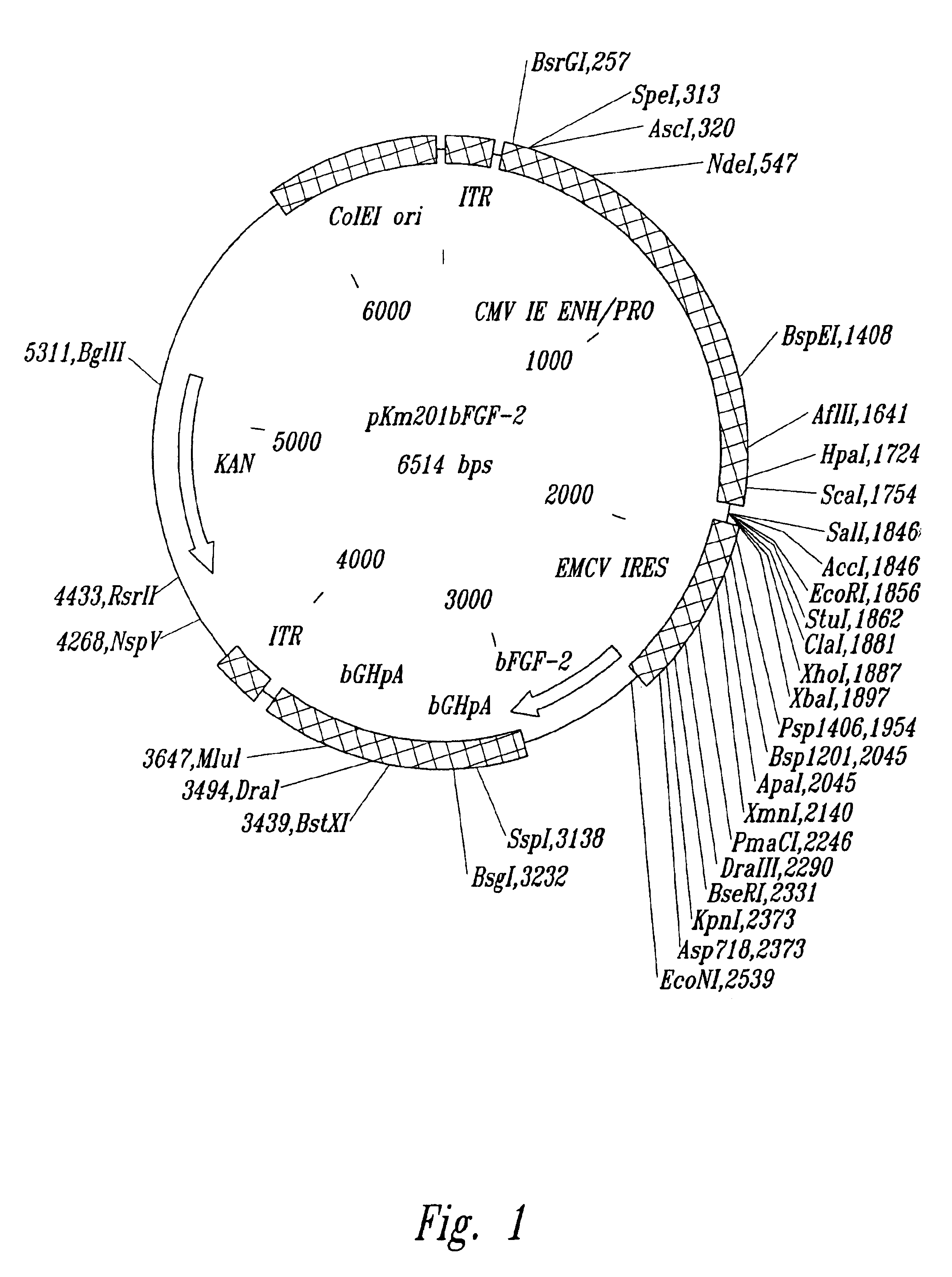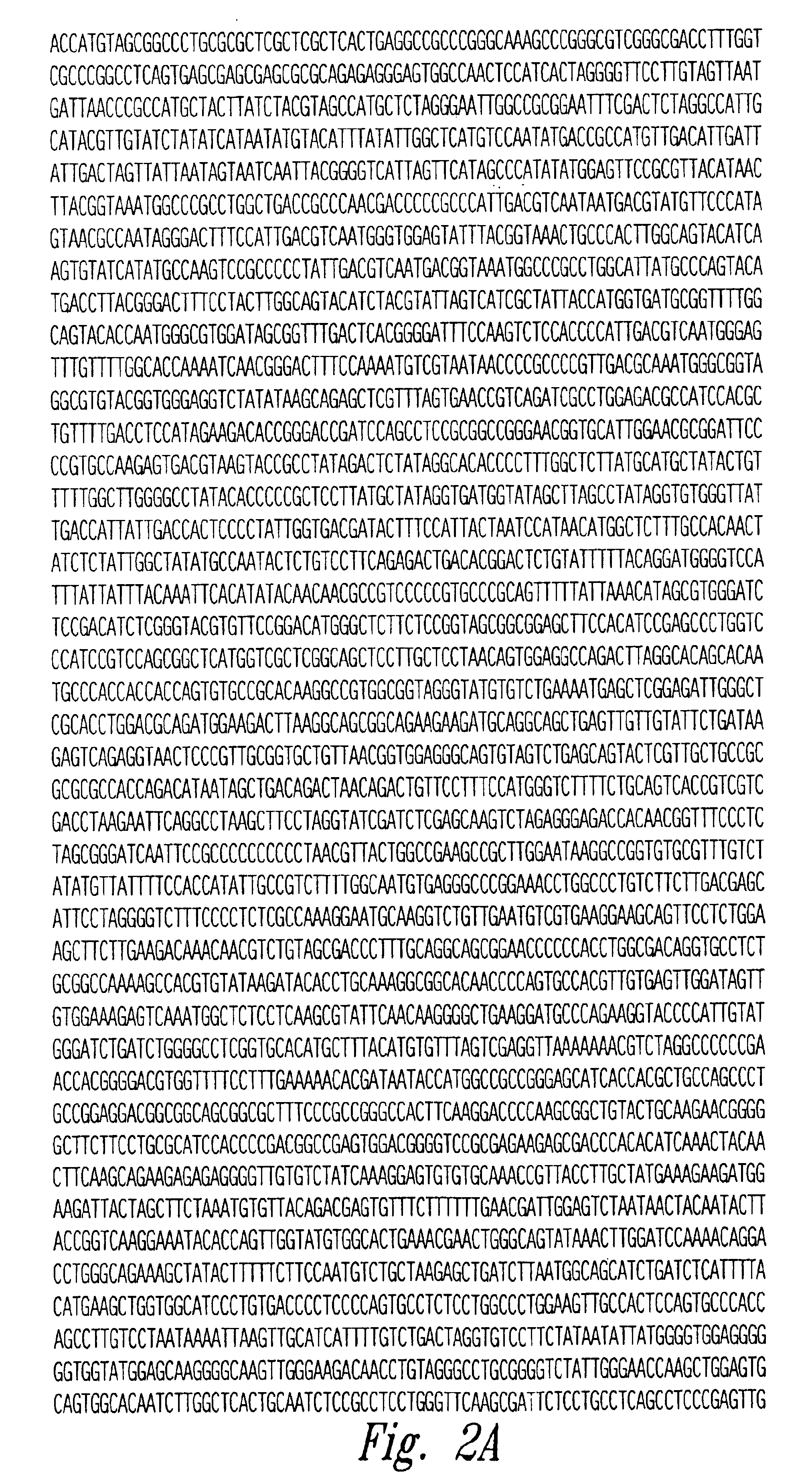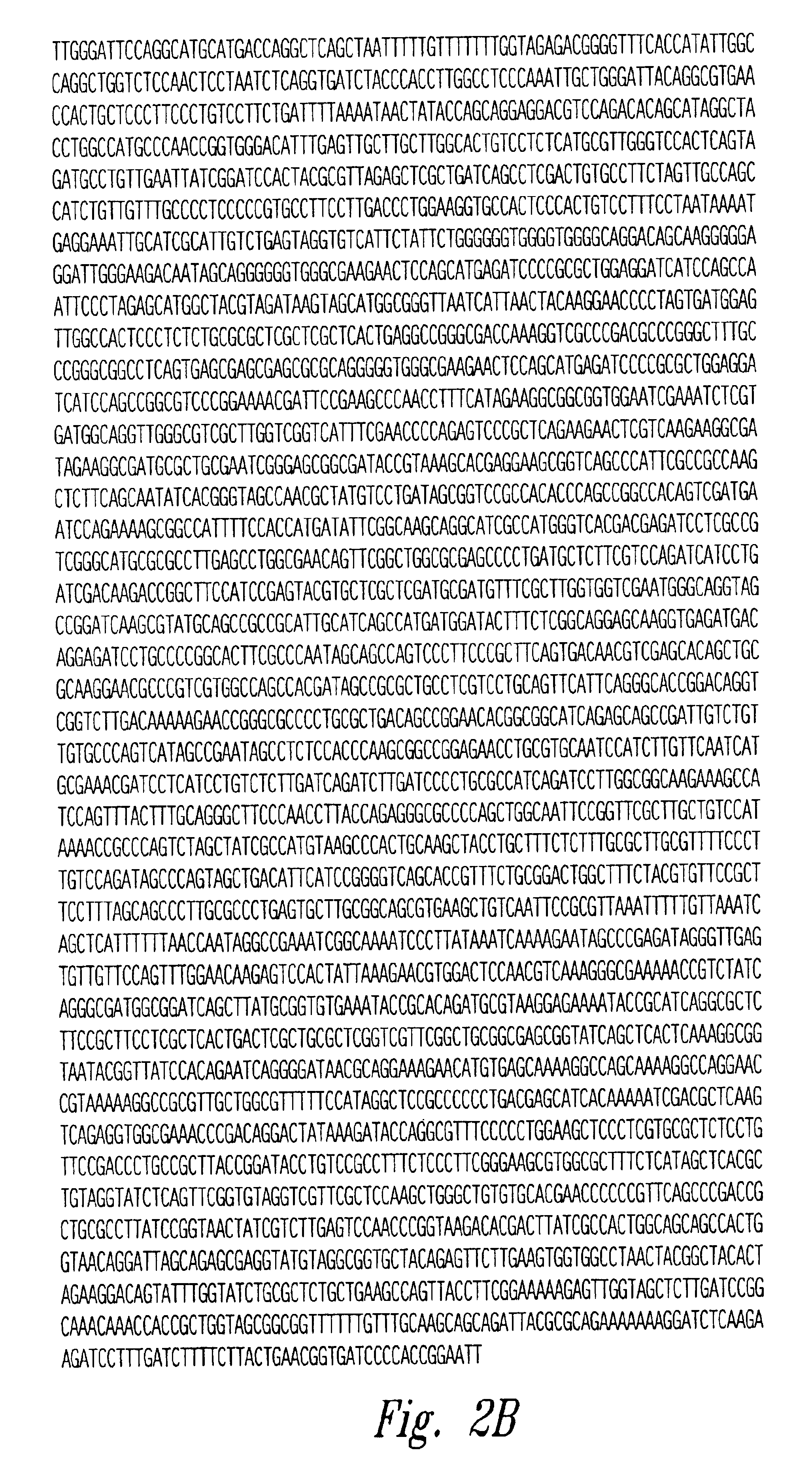Use of recombinant gene delivery vectors for treating or preventing diseases of the eye
a technology of recombinant gene and delivery vector, which is applied in the field of eye diseases, can solve the problems of devastating eye disease, visual loss or complete blindness, and eye diseases that represent a significant health problem, and achieve the effect of inhibiting neovascularization of the ey
- Summary
- Abstract
- Description
- Claims
- Application Information
AI Technical Summary
Benefits of technology
Problems solved by technology
Method used
Image
Examples
example 1
Construction of a RAAV Vector Expressing FGF-2
[0145]pKm201CMV is an AAV cloning vector in which an expression cassette, consisting of a CMV immediate early promoter / enhancer and a bovine growth hormone (BGH) polyadenylation site, is flanked by inverted terminal repeat (ITR) sequences from AAV-2. Briefly, pKm201CMV was derived from pKm201, a modified AAV vector plasmid in which the ampicillin resistance gene of pEMBL-AAV-ITR (see Srivastava, (1989) Proc. Natl. Acad. Sci. USA 86:8078-8082) had been replaced with the gene for kanamycin resistance. The expression cassette from pCMVlink, a derivative of pCMV6c (see Chapman, Nucleic Acids Res. 19:193-198 (1991)) in which the BGH poly A site has been substituted for the SV40 terminator, was inserted between the ITRs of pKm201 to generate pKm201CMV.
[0146]pKm201bFGF-2 was constructed by cloning the following, in order, into the multiple cloning site of pKm201CMV: the encephalomyocarditis virus (EMCV) internal ribosome entry site (IRES), the ...
example 2
Infection of Cells with RAAV-CMV-FGF-2 Results in the Expression of FGF-2
[0151]293 cells were plated the day before infection at 5×105 cells / well in 6-well plates were infected with rAAV-CMV-bFGF-2 virus, prepared as described above in Example 1, at different multiplicities of infection (MOI) with and without etoposide (3 μM). Etoposide is a topoisomerase inhibitor which has been shown to increase transduction of rAAV vectors (Proc. Natl. Acad. Sci. USA, 92:5719-5723, 1995). Forty-eight infection, culture supernatant was collected and cells were lysed in 0.5 mL 1× lysis buffer (100 mM NaCl, 20 mM Tris pH 7.5, 1 mM EDTA, 0.5% NP40, and 0.5% deoxycholate). FGF-2 in the supernatants and lysates was assayed by ELISA (cat. # DFB00, & D Systems, Minneapolis, Minn.) following manufacturer's instructions. The shown below in Table 1.
[0152]
TABLE 1FGF-2 PRODUCTION IN 293 CELLS FOLLOWINGINFECTION WITH RAAV-FGF-2sampleinfection MOIEtoposideFGF2 proteinCulture Medium Supernatant (1.5 ml)10−22 × 1...
example 3
A. Construction of RAAV Vectors
Construction of pD10-bFGF-2
[0153]The pD10 AAV vector is constructed by replacing the AAV gene encoding sequences of pD-10 (see Wang, X. et al., J. Virol. 71:3077 (1997), with the CMV promoter, multiple cloning site, and BGH polyadenylation sequences from pKm201CMV. Briefly, oligonucleotides 5′-ggtatttaaa acttgcggcc gcggaatttc gactctaggc c-3′ (SEQ I.D. No. 9) and 5′-gctgcccggg acttgctagc tggatgatcc tccagcgcgg ggatctcatg-3′ (SEQ I.D. No. 10) are used to amplify the CMV expression cassette from pKm201CMV. The product of this PCR amplification is digested with SmaI and DraI and cloned into pD-10 digested with EcoRV. This new vector is named pD-10CMV.
[0154]To construct pD10-bFGF-2, the synthetic gene for bovine FGF-2 (see U.S. Pat. No. 5,464,774 for sequence) is digested with EcoRI and SalI, treated with T4 polymerase to blunt the ends, and then cloned into the StuI site of pD10-CMV. The synthetic gene described above encodes the mature, processed form of b...
PUM
| Property | Measurement | Unit |
|---|---|---|
| pH | aaaaa | aaaaa |
| distance | aaaaa | aaaaa |
| thick | aaaaa | aaaaa |
Abstract
Description
Claims
Application Information
 Login to View More
Login to View More - R&D
- Intellectual Property
- Life Sciences
- Materials
- Tech Scout
- Unparalleled Data Quality
- Higher Quality Content
- 60% Fewer Hallucinations
Browse by: Latest US Patents, China's latest patents, Technical Efficacy Thesaurus, Application Domain, Technology Topic, Popular Technical Reports.
© 2025 PatSnap. All rights reserved.Legal|Privacy policy|Modern Slavery Act Transparency Statement|Sitemap|About US| Contact US: help@patsnap.com



